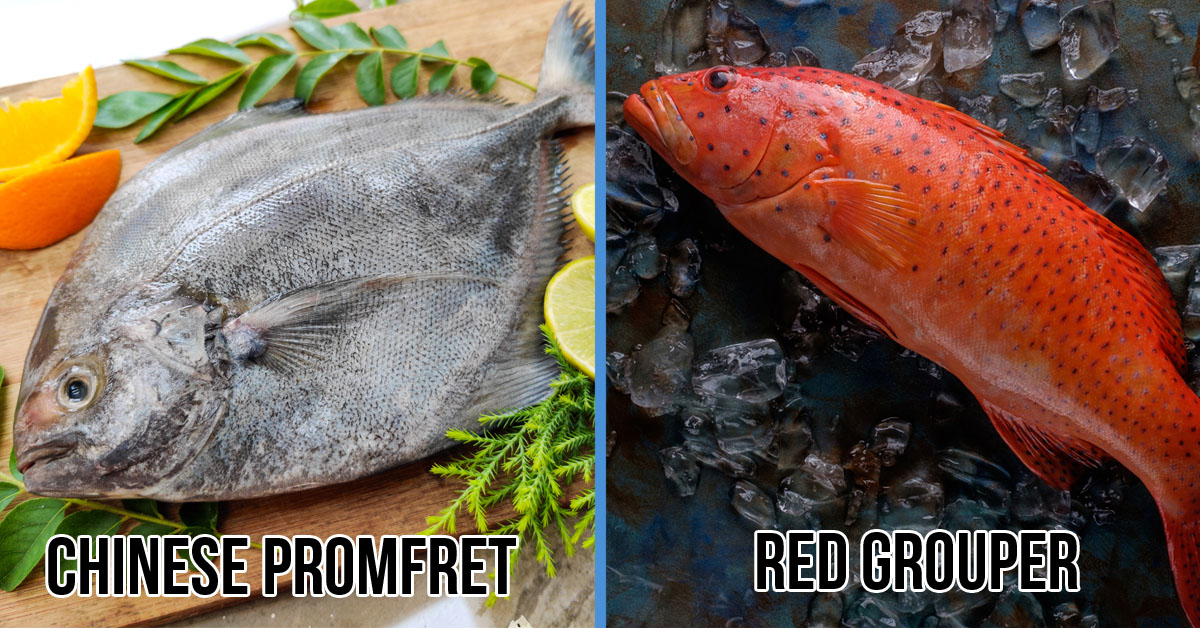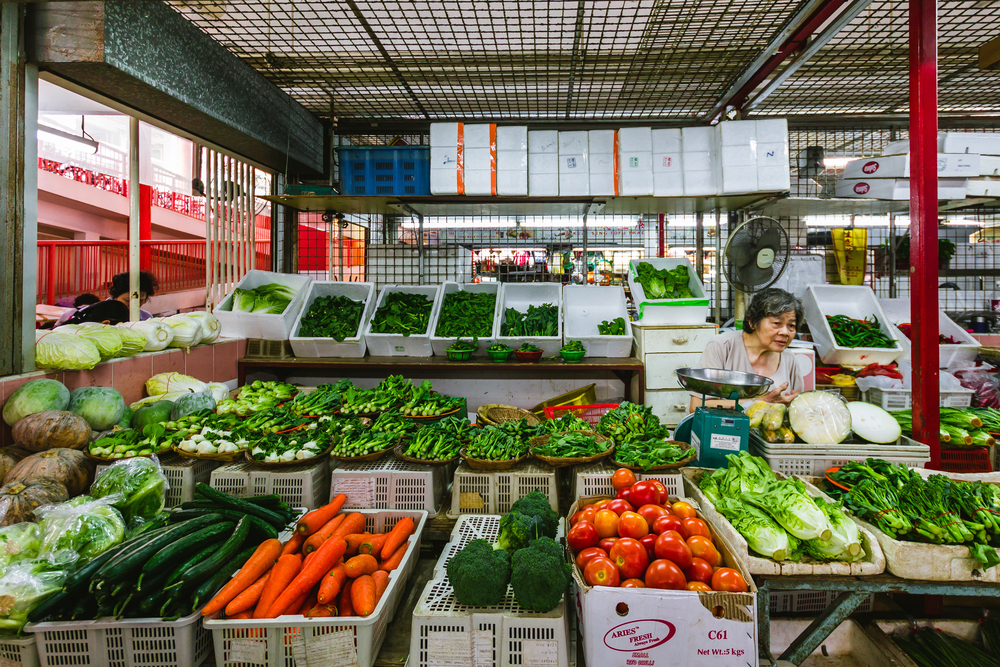With the monsoon season sweeping in and flooding Malaysia, and China snatching up some of the stocks of the fresh fishy goodness, prices for fish have become quite slippery.
By which I mean some of the popular fish like the Chinese pomfret and red grouper have hiked up in prices, with some sellers even doubling the original price.
Situation in the Wet Markets
According to The Straits Times, the Chinese pomfret is going at prices as high as $90 to $100 per kilogram (kg), which is an increase from $40 to $50 per kg last November.
Similarly, the red grouper is now priced at around $75 per kg, from its original prices of $30 to $40 per kg last November.

There are a couple of reasons for the price hikes, according to some of fishing merchants’ associations:
The President of the Singapore Fish Merchants’ General Association, Mr Ang jwee Herng, noted that these two types of fish tend to be more expensive as the Lunar New Year draws closer, due to the increase in demand.
“It isn’t any different from the previous years,” he said.
Meanwhile, stallholders said the high increase in prices had been exacerbated by the flooding last month.

This point is supported by the fact that the Malaysian fisherman have been avoiding going out to sea due to the flooding caused by the rain. This has led to the supply of fish coming from Malaysia to decrease by 20 to 30%.
Moreover, China has also been snatching up a portion of the available fish stocks which further decreased the supply that Singapore receives in total.
Prices of Other Fishes
In fishmongering though, it is usually the quality that can affect the prices of the fish.
For instance, Fishmonger Michael Yak, who owns a store in Tiong Bahru Market, stated that his prices for the rabbit fish and marble goby have remained constant at $40 per kg.

Whereas for BM Seafood in Ghim Moh, Fishmonger Lee Kok Weng said that his rabbitfish was priced at $30 per kg because it was of good quality, but the stocks for this week were comparatively normal so he dropped the price to $26 per kg.
Likewise, the price of Lee’s marble goby has remained the same at $45 per kg.
As for the other seafood, prawns have been drifting between $20 to $25 per kg, depending on which stall you’re purchasing it from. However, there is a noticeable mark up of $5 in price for the prawns across the different markets.
I may be a fan of my sashimi, but I never knew that fish prices were that expensive….
On the Greener End
Unfortunately, vegetables prices are also starting to creep up.
The increases aren’t as apparent as poultry, but the lack of labour in Malaysian farms means that vegetable prices are more susceptible to fluctuation.
Statistically speaking, 64% of the 80,434 tonnes of leafy vegetables imported into Singapore came from Malaysia last year, which speaks volumes of how vital their supply of vegetables is, owing to the convenience of proximity and close trade ties.
Mr Jerry Tan, the Vice-Secretary of Singapore Fruits and Vegetables Importers and Exporters Associations commented that vegetables such as tang oh and Chinese cabbage are not as affected, but the prices of tomatoes coming from Malaysia have increased.
As a result, some importers have turned towards Thailand for supplies instead.
Ms Zhang, another stallholder at Ghim Moh Road Market and Food Centre, echoes the same sentiment. She laments that her ordered supplies of cherry tomatoes from Malaysia didn’t arrive because of the floods, but she kept her prices at $6 to $7 per kg to maintain her regular flow of customers.

In fact, other vegetable stallholders have muttered that they can’t increase their prices drastically because their businesses are already less-than-stellar due to the pandemic, to say nothing of the competition surrounding them.
But others, like Mr Mic Ng who runs a stall in Clementi has bitten the bullet and increased the prices of his tomatoes by one dollar because his stocks are still inconsistent from external causes.
He had to raise the prices for other vegetable items like spinach and Chinese cabbage as well, the increase ranging from between 50 cents to $3 per kg.
Even common vegetables like tang oh and spinach are not saved; with their prices rising to $10 per kg per kg, which is an up from the $7 and $8 they were priced at respectively.
On the other hand, Madam Goh, a 75-year-old stallholder at Tiong Bahru market kept her vegetables prices constant in spite of the suppliers increasing their prices by 30%.
She stated that she chose to absorb the costs since no one would buy her goods if she were to increase the price.
Supermarkets at Large
Although supermarkets have more sources to get their supplies from, they are not wholly unaffected by the external circumstances either.
A representative of Sheng Siong confirmed that the prices of the Chinese pomfret and red grouper has also increased by 10 to 15% due to the higher demand.
For the most part, the supermarket is trying to keep its prices stable, and in order to off-set the increase in prices, Shen Siong intends on having festive discounts.
It will also continue to diversify its suppliers for fresh produce by working with local and oversea sources.
FairPrice doesn’t seem to have as much trouble as they declare that the food prices imported from Malaysia have remained consistent, though they will continue to observe the situation to ensure a stable supply of essential groceries at affordable prices.
However, not all supermarkets are like the government owned FairPrice union where it ships its food produce from more than a hundred countries.
The spokesman for DFI Retail Group, the owner of Giant, chose not to elaborate on the specific prices of the items, beyond the fact that Giant’s Lower Prices That Last range have shot up by half last week.
Judging from that terse statement, Giant might be starting to the slight brunt of decreasing profit margins, even though it’s still coping.
Join our Telegram channel for more entertaining and informative articles at https://t.me/goodyfeedsg or download the Goody Feed app here: https://goodyfeed.com/app/
In summary, it seems like the poultry and produce have not escaped its fate of inflating prices due to the awful weather conditions and the pandemic.
It might just be a matter of time before prices at hawker centres and local restaurants start increasing too, where the burden of the increased costs are passed on to us, the comsumers.
Read Also:
- Study Shows Omicron Variant Can Survive up to 8 Days on Plastic & 21 Hours on Skin
- Floor Tiles in Tampines HDB Flat Suddenly ‘Exploded’, Nearly Injuring Toddler
- Everything About the Impending War Between Ukraine & Russia Simplified for You
Featured Image: Shutterstock / Ronnie Chua
Would you be jailed for being half-naked in public? Well, the answer will shock you. Seriously. Watch this to the end and you'll understand:




